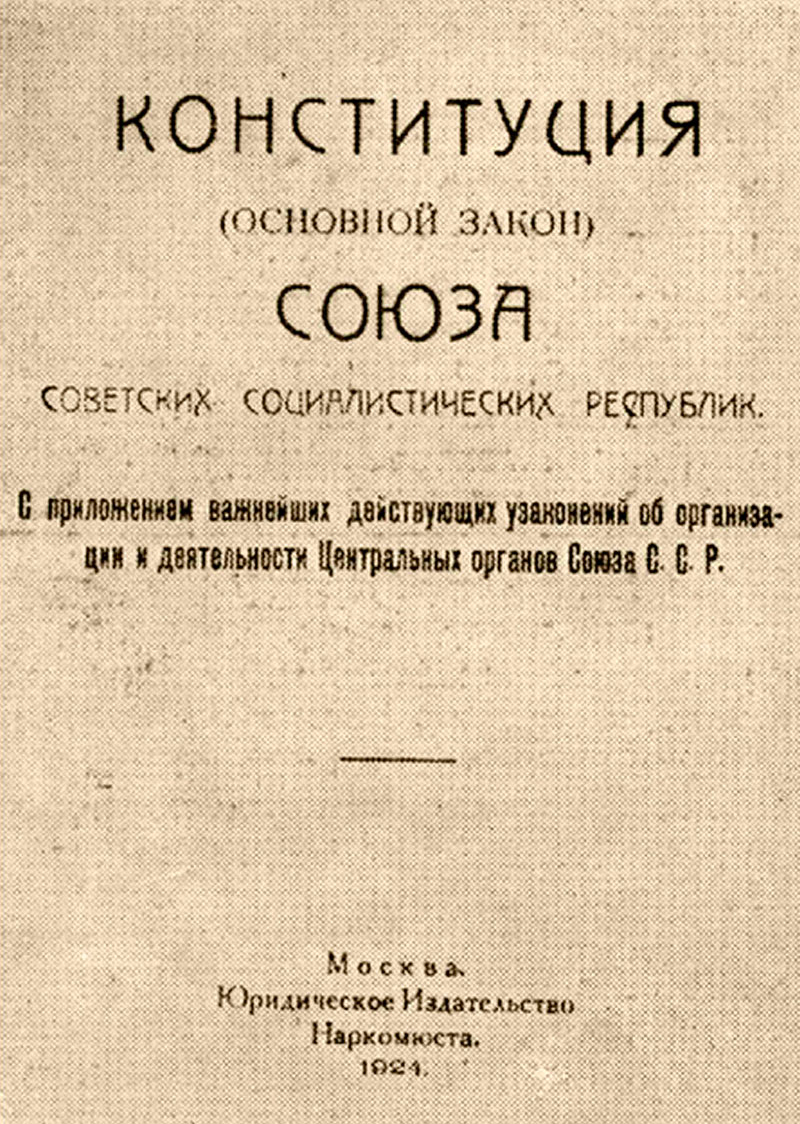It was adopted by the Second All-Russian Congress of Soviets on January 31, 1924. It specified that “union republics make amendments to their constitutions in accordance with this Constitution”. The Constitution comprised two sections – the USSR Establishment Declaration and the USSR Establishment Agreement.
The USSR Constitution of 1924 is one of the most critical documents on the history of the domestic state and law of the 20th century. In December 1922, the First Congress of Soviets of USSR approved of the Declaration and the Agreement of USSR Establishment. The Agreement was signed by four republics: RSFSR, Ukraine, Belarus and ZSFSR (the alliance of Georgia, Armenia and Azerbaijan). Each of the republics had the constitution of its own. It was resolved to develop the all-Union Constitution, and in January 1923 the USSR Central Executive Committee’s Presidium formed six commissions for drafting the most important parts of the future Principal Law. The USSR Constitution of 1924 was adopted by the Second All-Union Congress of Soviets in January 1924, becoming a successor of the RSFSR Constitution of 1918
It specified that “union republics make amendments to their constitutions in accordance with this Constitution”. It comprised two sections – the USSR Establishment Declaration and the USSR Establishment Agreement. Unlike with the Principal Law of 1918, the Declaration of Rights of Working and Exploited People was not included into the new constitution; it was separately stated that the latter was derived on the main provisions of the earlier constitution. The USSR Constitution of 1924 and republican constitutions virtually supplemented each other, comprising the single Soviet Constitution. It marked establishment of the USSR formation and separation of rights of the USSR and union republics in the constitution. The single union nationality was set out.
According to the main provisions of the Constitution, the USSR Congress of Soviets was announced the supreme governmental authority, and during congresses, the USSR Central Executive Committee, during sessions, the USSR Central Executive Committee’s Presidium. The Central Executive Committee was vested with the right to cancel and suspend regulations issued by any authorities in the Union, except for those issued by the Congress of Soviets. The Central Executive Committee’s Presidium had the right to cancel and suspend resolutions of the Council of People’s Commissioners (CPC), individual USSR people’s commissariats as well as CEC and CPC of union republics. Nonetheless, the CEC Presidium was only able to suspend resolutions of congress of Soviets of union republics by sending a request for their cancellation to the USSR Central Executive Committee.
The USSR Constitution of 1924 is distinguished from Soviet Constitutions adopted later. It does not contain a description of the public structure or chapters on rights of nationals, elective right, local authorities.
